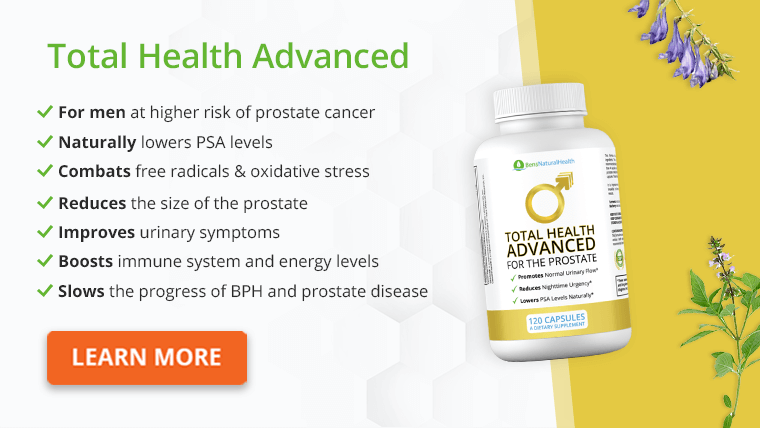Prostate cancer is the second most common cancer in men, with millions of cases diagnosed each year.
Globally, it accounts for 4% of all cancer-associated deaths in men. Though the causes of the disease remain largely unknown, certain factors can increase your risk .
Like many types of cancer, the odds of developing prostate cancer increase with aging. Most cases develop in men over the age of 50 years. For poorly defined mechanisms, it is common in men of a particular race, and less in others.
Research also suggests that a family history of the disease, obesity, and infection increases your risk of prostate cancer. Some of these risk factors are also associated with the aggressiveness of the disease.
Prostate cancers are diagnosed in early, slow-growing stages, requiring no immediate treatment decision. Localized and locally advanced forms of the disease are treated with surgery and radiation therapy. However, these treatment options cause significant side effects.
Following this, they do not consider the interaction with risk factors such as infection and environmental exposures. Prevention strategies targeting modifiable risk factors are essential to tackle the ever-increasing incidence of prostate cancer.
Here, we discuss the prostate cancer risk factors and available evidence on their link. Some of the lifestyle changes that could reduce individuals’ risk are highlighted.
Get Your FREE PSA Lowering Diet Plan!
- Naturally lower PSA levels
- Reduce nighttime trips to the bathroom
- Enjoy better bladder control and urine flow
What is prostate cancer?
Prostate cancer is a malignancy of the prostate, a small gland in men that produces seminal fluid.
Cancer is when cells become abnormal and divide in an uncontrolled way. In some cases, metastatic cells emerge and invade the surrounding tissues and may spread to distant organs.
What are the risk factors for prostate cancer?
Family history of prostate cancer
Family history is a strong predictor of a prostate cancer diagnosis, with over 20% of patients reporting a family history of the disease.
Studies have found that prostate cancer cases are likely to have a first-degree relative with a history of the disease. These observations suggest that
- genetics
- shared lifestyle
- and patterns of environmental exposures contribute to this link.
Inherited genetic variations contribute to more than 5% of prostate cancer risks (Ferris-i-Tortajada et al., 2011; Sridhar et al., 2010).
Age
Increasing age is associated with a high incidence of prostate cancer. Epidemiological data show it affects more than 50% of men over the age of 65 years compared to 3.5% for men under 50 years.
Indeed, 30% of men who died for other causes were found to have evidence of prostate cancer. The indolent nature of prostate cancer means that older men are likely to die from other conditions.
Race
Prostate cancer incidence shows significant variations between geographical regions and racial groups. Countries with the highest incidence rates have ten times more diagnosis compared to those with the lowest incidence rates.
Similarly, black men have a higher risk, diagnosed at a younger age with a more aggressive disease compared with men of other races. However, the reasons for these differences remain unclear and require further research.
Differences in environmental exposure, genetic predisposition, and socioeconomic factors also influence these differences. For instance, rates of prostate cancer are higher in African men living outside African compared to those in the continent.
The above observations highlight the importance of environmental factors in prostate cancer development. Some studies have demonstrated that African American men have a high rate of genetic mutations in tumor-associated genes compared to other races. Higher rates of mutations in tumor suppressors results in an increased risk of developing prostate cancer.
A recent prospective study by Tracy et al. investigated the race-specific associations between diet, nutrient, genetics, and prostate cancer development.
The study demonstrated that only a few of the factors associated with prostate cancer were shared between races. For instance, increasing height in white men is associated with higher risk. Yet, this is the reverse for black men. Further, disparities in healthcare access, screening, and presentation can explain some of the racial differences.
Substance exposure
Chemical agents can increase the risk of prostate cancer development. The relationship between alcohol, cigarettes, and several types of cancers has been established.
Heavy alcohol abuse, defined as consuming more than three drinks per day, may increase the risk of prostate cancer. Rota et al. observed a significant link between higher alcohol intake and prostate cancer.
The study found that four alcoholic drinks per day, relative to control, are associated with 1.21-fold increased risk of prostate cancer (Rota et al., 2012).
Other studies did not find any link between alcohol intake and prostate cancer incidence. But heavy alcohol consumption may induce oxidative stress and inflammation. This in turn could promote prostate cancer development.
However, the complex interaction between this disease and other factors like race, and genetics may influence the exact role played by alcohol.
A link has also been established between smoking and prostate cancer. For smoking, the risk of prostate cancer increases with the number of cigarettes smoked daily. At the same time, a weak association exists for the total number of smoking years.
Smoking can induce both hormonal and genetic changes that cause cancer. For instance, male smokers have higher levels of androgens. This may initiate disease development and support progression. On the other hand, cigarette smoke may induce gene mutations that increase the risk and mortality of prostate cancer.
Other chemical compounds linked to prostate cancer include:
- herbicides (chemicals used to kill plants)
- insecticides
- and other organic compounds.
These chemicals can enter foods through soil contamination. Studies have found a high correlation between these compounds, incidence rate, and aggressiveness of prostate cancer (Ansbaugh et al., 2013).
These observations suggest that organic compounds are predictors not only of developing prostate cancer but also mortality from advanced disease.
Infection and inflammation
Infection can increase the risk of cancer through inflammation and cell transformation. This is typically observed in viral infections). A bacterial or viral infection is present in some cases of prostate cancer and can be linked to cancer-initiating inflammation.
A meta-analysis by Taylor and colleagues demonstrated significant elevated odds ratios for prostate cancer development where any sexually transmitted disease is present (Taylor et al., 2005).
There is a strong link between prostate inflammation and elevated PSA levels, which is correlated with the risk of prostate cancer. Studies supports the role of inflammation in reprogramming the tumor environment towards metastasis.
Diet
Several studies have offered strong evidence that dietary factors contribute to the development of prostate cancer.
However, other forms of evidence, like case-control and cohort studies, have provided mixed results (Zhu et al., 2005). The most important dietary factors in this cancer are total energy consumption, fat, calcium content, and antioxidant levels (Zhu et al., 2005).
Some of the dietary factors increase your risk of prostate cancer, while others are protective. For example, communities that consume a high amount of saturated fat (animal fat and high-fat dairy products) have an increased risk of prostate cancer compared with those with low intake of these foods.
Conversely, consumption of tomato-based foods decreases the risk of prostate cancer. Probably through the antioxidant activity of lycopene.
A randomized intervention trial in men under the age of 60 years demonstrated that high total fat consumption increased the risk of prostate cancer (Aronson et al., 2010).
Other studies showed that the level of testosterone is lower in vegetarians and individuals undergoing a low-fat diet. This observation is consistent with the biological effects of lipid metabolisms. Whereby fat promotes oxidative stress and increases androgen levels to induce an abnormal growth of cells.
Other studies show that immigrants moving from developing countries experience diet mediated shift towards increased risk. Gradual change towards a western diet causes a remarkable increase in the risk of this cancer in Asian and African immigrants.
Obesity
Obesity, combined with an inactive lifestyle and high-fat diet, increases the risk and progression of prostate cancer. Numerous studies have shown that men with high body mass index (BMI) have an increased risk of prostate cancer .
High levels of growth hormones are known to promote prostate cancer development. For instance, physical inactivity leads to insulin resistance. This, in turn, elevates insulin levels. Because insulin is a growth-promoting hormone, its concentration is related to cancer cell growth.
Microbiome
Microorganisms play a role in immune and metabolic functions and contribute to inflammation. They are emerging as essential players in the development of cancers.
In men, the composition of the gastrointestinal tract (GI) microbiome may influence the metabolism of estrogen, fat, and calcium that increases the risk of prostate cancer (Sha et al., 2020).
Some studies investigated the association between microorganisms, prostate cancer, and antibiotics. Tulstrup and colleagues demonstrated that antibiotics could alter the GI microbiota towards a tumor-promoting state (Tulstrup et al., 2015).
Antibiotic drugs like penicillin cause a moderate increase in the risk of prostate cancer. Chronic inflammation caused by the imbalance in microbial diversity can lead to prostatitis and potentially cancer.
How can you reduce the risk of prostate cancer?
Research efforts are ongoing to identify preventive approaches for many cancers.
You can make positive lifestyle and health choices that may help mitigate your modifiable risk factors, potentially reducing the risk of this condition. Though you cannot control some of the risk factors like age , physical activity, low-fat diet, good microbiota, and smoking stopping and moderate alcohol can reduce your risk.

Increase physical activity
Regular physical activities are one of those choices that provide significant benefits. Exercise can reduce PSA levels, inflammation, and control androgen activity.
Reduce fat and total energy consumption
A low-fat diet rich in fruit and vegetables can lower your risk of prostate cancer. Reduce the use of red meat and dairy products. A balanced diet may be associated with reducing oxidative stress and potentially supporting immune function. Combined with physical activity balanced diet can stop chronic inflammation and initiation of cancer.
Quit smoking
Smoking cessation eliminates persistent DNA damage and cancer initiation.
Maintain healthy GI microbiome
Since the GI microbiome influence many normal biological functions, altered diversity creates many problems for the body. Avoid inappropriate use of antibiotics and consider supplementation with probiotics.
Explore personalized natural supplementation
Plant-based vitamins and minerals found in tomatoes, avocados, walnuts, and pomegranate can improve your prostate health.
Though natural supplements may help improve your modifiable risk factors for prostate cancer. However, some of their mechanisms of action are uncharacterized. Thus, a personalized approach is the most effective way to reduce your risk of prostate cancer.
Lycopene may play a role in the potential link between reduced prostate cancer risk and the consumption of tomato-based foods, according to some studies. Thus, consider supplements rich in lycopene.
Conclusion
Prostate cancer can develop advanced disease, spreading to the lymph nodes and bones. There is no treatment for advanced metastatic disease. Thus men with advanced disease have a poorer outcome compared to those with early-stage disease.
Applying strategies can help to prevent prostate cancer and improve men’s health. The approaches discussed above can reduce the lifetime risks of prostate cancer development, the morbidities associated with cancer treatment, especially in those newly diagnosed patients.
Explore More

How to Naturally Protect Your Prostate From Prostate Cancer, BPH, and Prostatitis.







